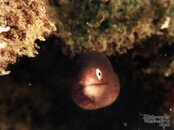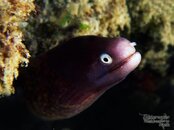You are using an out of date browser. It may not display this or other websites correctly.
You should upgrade or use an alternative browser.
You should upgrade or use an alternative browser.
Anyone use the new Inon UCL-100LD/UCL-100M67 close-up lens yet?
- Thread starter AlMitch
- Start date
Please register or login
Welcome to ScubaBoard, the world's largest scuba diving community. Registration is not required to read the forums, but we encourage you to join. Joining has its benefits and enables you to participate in the discussions.
Benefits of registering include
- Ability to post and comment on topics and discussions.
- A Free photo gallery to share your dive photos with the world.
- You can make this box go away
They will be similar with maybe half inch variation
Ideally you want something in the 4-8" range and something in the 2-4" range working distance but it depends on what you shoot
People talk about macro but unless you really are in macro location most critters are bigger than one inch
121 I live in Singapore and am only a 3 hour flight away from Lembeh, so I'm sure that qualifies as a macro location
AiMitch that definitely does count as macro
Having used the RX100 for Pygmy seahorses in video I would anyway recommend that you also get an inon UCL330 to stack if you buy the UCL-100 and want to shoot really small things as the capture area of the RX100 is rather large
I found two UCL165 provided me exactly what I needed however the chromatic aberration was increased. In video you notice it less but in stills is more apparent, however Lightroom ca remover does wonders....
Two UCL165 remains my favourite close up set for the RX100 for flexibility, quality and cost
Having used the RX100 for Pygmy seahorses in video I would anyway recommend that you also get an inon UCL330 to stack if you buy the UCL-100 and want to shoot really small things as the capture area of the RX100 is rather large
I found two UCL165 provided me exactly what I needed however the chromatic aberration was increased. In video you notice it less but in stills is more apparent, however Lightroom ca remover does wonders....
Two UCL165 remains my favourite close up set for the RX100 for flexibility, quality and cost
Last edited:
deeper thoughts
Contributor
- Messages
- 6,944
- Reaction score
- 2,890
- # of dives
- 500 - 999
good info
K
KeithG
Guest
I have both the +10 and +5 (but a different camera). The +5 focuses about 5 inches away and the +10 is around 9 inches (give or take a bit). Both have narrow dof. I am not sure how this is affected by different cameras.I'll definitely take the camera with and try it out first before I buy it. Warning noted.
How close does the Sub sea +10 focus from the lens? Does it give you more room to work with?
They are useful when you can not get close to your subject. The +10 does vignette if I do not zoom out most of the way. The +5 sits on the shelf at home.
The one surprise I got was that for my camera these lens did not not really give me the ability to capture "larger" images of small things. My camera can focus to 1cm from it's lens but now I have to move 9 inches back which basically results in the the subject being the same size. So for things I can not get close to, I use the lens, for things I can get close to (like coral polyps!) I flip the lens up and just use the cameras native macro capability. Camera is a s&s dx1g (Ricoh caplio gx100) with a 24mm to 72mm built in zoom.
I have both the +10 and +5 (but a different camera). The +5 focuses about 5 inches away and the +10 is around 9 inches (give or take a bit). Both have narrow dof. I am not sure how this is affected by different cameras.
They are useful when you can not get close to your subject. The +10 does vignette if I do not zoom out most of the way. The +5 sits on the shelf at home.
The one surprise I got was that for my camera these lens did not not really give me the ability to capture "larger" images of small things. My camera can focus to 1cm from it's lens but now I have to move 9 inches back which basically results in the the subject being the same size. So for things I can not get close to, I use the lens, for things I can get close to (like coral polyps!) I flip the lens up and just use the cameras native macro capability. Camera is a s&s dx1g (Ricoh caplio gx100) with a 24mm to 72mm built in zoom.
72mm is too little zoom to benefit from a diopter. It may be worth reading this
Underwater Video Tips: Choosing a Close Up Lens for a Compact Camera | Interceptor121 Underwater Video
The focus distance depends on the combination camera diopter in general the nominal specs are at 100mm equivalent
Never try the new one yet, personally using the ucl100m67, check the photo below, first one without the wetlens and the right one attached with the lens:


That's baby mooray with about half ft long. Both taken at same distance, left with macro mode on and right with lens with macro mode off. Tested on G12.


That's baby mooray with about half ft long. Both taken at same distance, left with macro mode on and right with lens with macro mode off. Tested on G12.
The one surprise I got was that for my camera these lens did not not really give me the ability to capture "larger" images of small things. My camera can focus to 1cm from it's lens but now I have to move 9 inches back which basically results in the the subject being the same size. So for things I can not get close to, I use the lens,
Some cameras can focus so closely with the lens at full wide that using the lens full wide give the best macro if you can get that close.
For example, the Panasonic LX7 in full wide can focus as close as 5mm in front of the lens and a 32mm wide object will fill the sensor. But the LX7 in full zoom (telephoto) can only focus as close as 240mm which means it takes an object 120mm wide to fill the sensor.
So it is a matter of "can you get that close"?
The 'diopter' allows you to focus much closer. Of course you can't use the 'diopter' with the LX-7 in full wide. But zoom the LX-7 to full zoom (telephoto) and by adding the Subsee +10 you can shorten your minimum focus distance from 240mm down to 75mm. And because you now can move the camera 165mm closer to the thing you are photographing, that thing can be as small as 41mm wide and still fill the camera sensor.
I have tested the Inon UCL-100 against the Subsee +10 on compact cameras and micro-four-thirds lenses. I will try to publish comparison photos soon.
The UCL-100 works well with compact cameras. It also works well with 14-42mm lens, 12-50mm, and 45mm lens in Micro-four-thirds cameras.
K
KeithG
Guest
I actually have the opposite problem. My camera will focus at less than 1 inch At full telephoto. putting the subsea +10 on pushes the focus distance out to around 9 inches. So the subsea increases my distance to subject, it does not reduce it.Some cameras can focus so closely with the lens at full wide that using the lens full wide give the best macro if you can get that close.
For example, the Panasonic LX7 in full wide can focus as close as 5mm in front of the lens and a 32mm wide object will fill the sensor. But the LX7 in full zoom (telephoto) can only focus as close as 240mm which means it takes an object 120mm wide to fill the sensor.
So it is a matter of "can you get that close"?
The 'diopter' allows you to focus much closer. Of course you can't use the 'diopter' with the LX-7 in full wide. But zoom the LX-7 to full zoom (telephoto) and by adding the Subsee +10 you can shorten your minimum focus distance from 240mm down to 75mm. And because you now can move the camera 165mm closer to the thing you are photographing, that thing can be as small as 41mm wide and still fill the camera sensor.
I have tested the Inon UCL-100 against the Subsee +10 on compact cameras and micro-four-thirds lenses. I will try to publish comparison photos soon.
The UCL-100 works well with compact cameras. It also works well with 14-42mm lens, 12-50mm, and 45mm lens in Micro-four-thirds cameras.
It is useful for getting shots of things that I can not get to within 1 inch of. But it does not give me the ability to fill more of the frame.
My new found understanding is that my zoom is "too short" to give me that capability.
WOW, giffenk, your camera seems to be all back to front!! I've never heard of diopters increasing the focus distance. Are you sure you haven't got the diopter flipped the wrong way around?? ha ha I'm sure you dont.
Similar threads
- Poll
- Replies
- 18
- Views
- 908
- Replies
- 0
- Views
- 471
- Replies
- 10
- Views
- 526
- Replies
- 3
- Views
- 539




